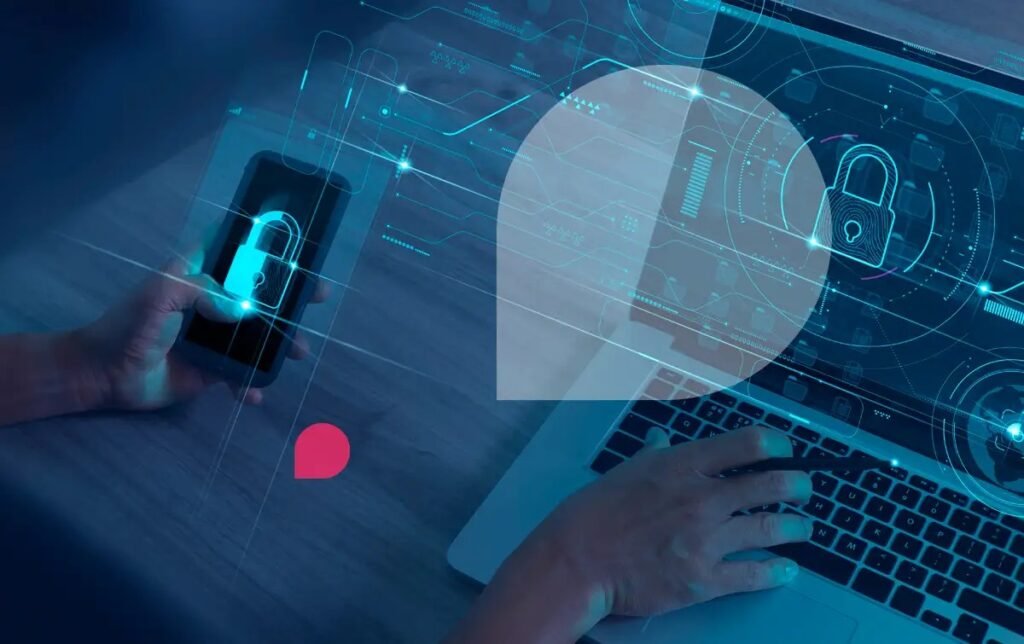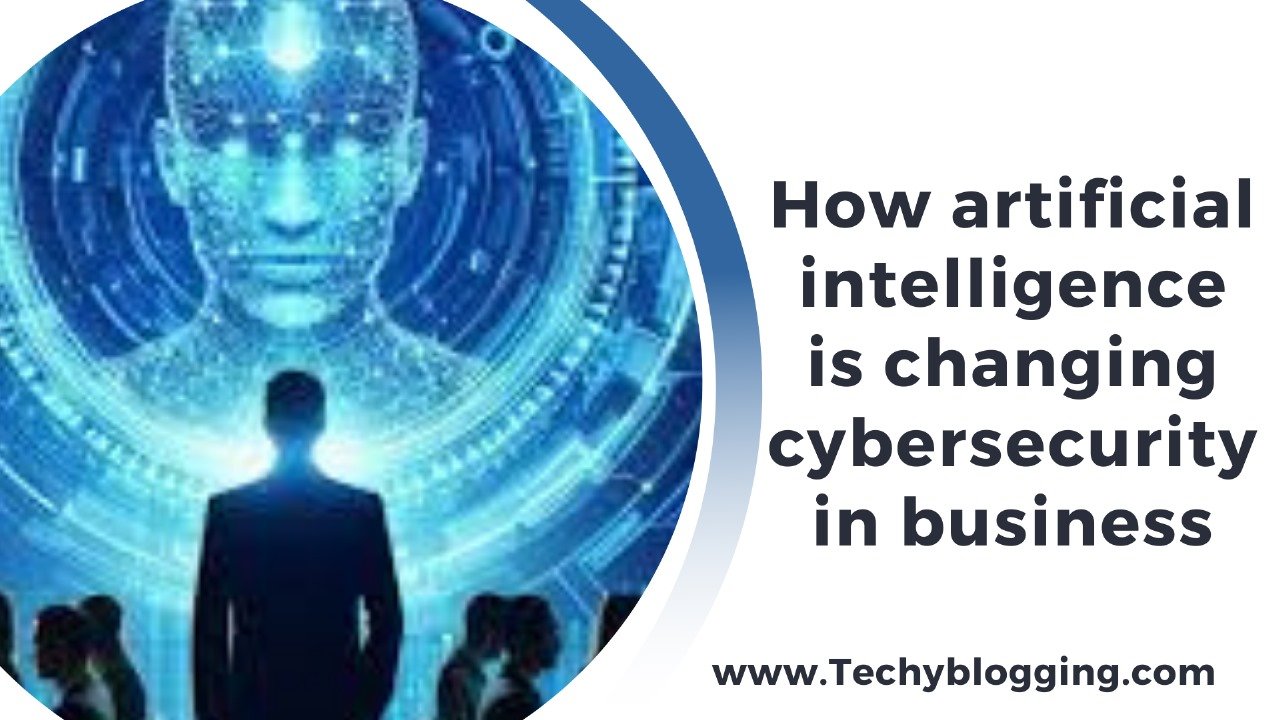How artificial intelligence is changing cybersecurity in business. As cyber attacks are becoming increasingly complex and widespread, companies have a greater requirement to safeguard their assets online. The traditional methods for cybersecurity including firewalls and antivirus software do not seem to be sufficient to deal with the complexity and size of cyber-attacks today. The answer is artificial intelligence (AI)–a revolutionary technology in the realm of cybersecurity. Through harnessing the power of AI firms are able to not just better protect from cyberattacks but also identify and react to dangers better and more energetically.
The Rise of Cybersecurity Threats
The transformation to digital technology in businesses is resulting in increased connectivity, as well as the ability to access sensitive information, however it also has raised the amount of ways to attack cybercriminals. From ransomware, phishing attacks and data breach There are a myriad of security threats that businesses face today is a plethora. In addition, these threats get more sophisticated using the power of machine learning and automation in order to deflect detection.
This means that traditional security strategies based on signature-based detection or rule-based systems are not able to cope with the ever-changing security threats. That’s the point where AI can help by providing the latest capabilities to detect threats, address security threats quicker and with greater efficiency more efficaciously than ever previously.
How AI is Enhancing Cybersecurity

AI technology, such as machines learning (ML) as well as natural processing of language (NLP) and behavioral analysis are changing how businesses secure their systems, networks as well as their data. These are the most significant ways AI has changed the landscape of cybersecurity:
1. Automated Threat Detection and Response
AI-powered systems analyze massive quantities of information from a variety of sources, including the network’s traffic patterns, users’ behavior and even endpoint activities–in real time to spot potential dangers. Machine learning algorithms are able to detect suspicious patterns that might be a sign of a cyberattack, for example, unusual patterns in access attempts, or the presence of unfamiliar devices connecting to the network.
When a security threat is identifie, AI systems can automatically start triggering responses like isolating vulnerable systems, preventing dangerous IP addresses, or warning security teams. Automating this process allows faster reaction times and also reduces the opportunity window for criminals.
2. Predictive Threat Intelligence
One of the strongest abilities that AI has AI for cybersecurity lies in its capacity to detect and deter cyberattacks prior to they take place. AI is able to analyze previous attacks and detect the patterns and trends that might suggest a new threat. Through with machine learning in order to constantly discover new information, AI systems can predict the possibility of attack vectors, and aid organizations to establish proactive security.
Predictive threat intelligence can also be used to detect zero-day vulnerabilities–previously unknown security flaws in software–by identifying unusual system behaviors that may indicate the presence of a new exploit.
3. Advanced Malware Detection
Traditional malware detection rely heavily on the known signatures of malware. The problem is that modern malware tends to change rapidly, which makes the use of signatures less efficient. AI-powered security tools can analyse the actions of software or programs to detect potentially harmful actions, even though the malware isn’t included in the system’s signature database.
Machine learning algorithms can identify subtle patterns and behaviours within processes and files that could be indicative of malware. This includes attempts to exploit vulnerabilities in systems or communicate with servers from afar or even encrypt files to demand ransom.
4. Enhanced User Authentication and Access Control
AI plays a crucial function in improving the user authentication by using biological data as well as behavioral analytics. The traditional password-based system is vulnerable to attacks like phishing, brute force and credential stuffing however, AI-based authentication techniques provide an increased level of security.
AI-powered systems analyze user’s behaviour in the course of time, including the patterns of typing or mouse movements as well as the location of their device, to produce an individual behavioral profile. If an individual’s actions diverge from the pattern they have established (e.g. entering their login from a location that is not familiar or a devices) The system will identify this as suspicious and initiate more security measures including the use of multi-factor security (MFA).
5. AI-Driven Security Orchestration
Security operation centers (SOCs) are charged with the monitoring, analysis and responding to security incidents across the all IT infrastructure. The volume of information which needs to be analysed could overwhelm even the most professional SOCs. Artificial intelligence-driven security orchestration tools can streamline the process through automation of routine tasks as well as assigning priority to events that require human intervention.
AI will analyze security alerts, link them to known security intelligence in turn favor security experts with concrete information. Security teams can focus their efforts on top priority risks while allowing them to automate lower-level activities like log analysis, alert triaging and documenting incidents.
The Challenges of AI in Cybersecurity
Although AI can bring significant benefits in cybersecurity, it presents new risks and challenges which businesses need to consider:
1. Adversarial AI
Criminals are aware of the potential for AI. Certain are together AI to carry out elaborate and sophisticated attacks for example, like creating targeted phishing messages that cater to the person’s preferences in communication or constructing malware that will modify to evade detection by AI devices. The use of adversarial AI is growing in security concern as cybercriminals come up with more sophisticated strategies to evade AI-driven security.
2. Data Privacy and Ethics
AI algorithms require massive quantities of data in order to understand and improve which raises concerns over the privacy of data and the compliance of regulations such as GDPR. Enterprises have to assure that they are ensuring that their AI models are based on secured and anonymized data in order in order to prevent the disclosure of sensitive data. Furthermore, businesses must take into consideration the ethical consequences of with AI in particular in the context of automating decisions regarding security like identifying or block specific users.
3. Skill Gaps and Integration
Integrating AI to the existing security infrastructure will require specialized talent and experience and expertise that may not be available within many companies. The cybersecurity teams should be educated in AI techniques and be able to use the information that are generated by AI tools. Additionally, companies have to assure that the AI tools are seamlessly integrated with various security tools to form a an integrated defense strategy.
The Future of AI in Cybersecurity
As AI technology continues to advance and advance, the impact they have on cybersecurity will only increase. The next technological advancements in AI will likely lead to greater threat detection capabilities that are able to detect threats at a rapid pace with incredible precision. Furthermore the combination of AI alongside other new technology like quantum computing and 5G may unlock the potential for security improvements for companies.
But, AI is not a magic bullet. Although it has the potential to greatly improve security, it must be viewed as a complimentary instrument to the human capabilities. Future cybersecurity trends is likely to require an approach that is hybrid, which combines AI with the desirable of AI alongside the experience of the human mind, imagination, and thought of security professionals.
Conclusion
Artificial Intelligence is fundamentally changing the world of cybersecurity the business world, bringing improved detection capabilities, quicker responses, and the capability to anticipate and ward off threats. While businesses are continuing to implement AI-based security strategies however, they need to be aware of the risks which these solutions pose which include the threat of an adversarial AI and the necessity to hire skilled workers. When they strike the right equilibrium, companies can tap the full power of AI in order to secure their resources, assure business continuity, and keep ahead of constantly evolving cybersecurity security threats.




